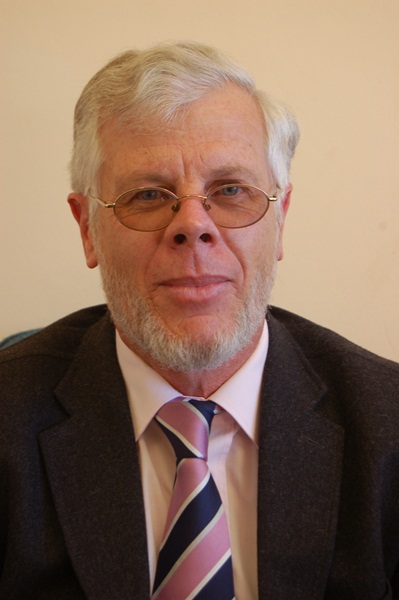-
Gross Domestic Product (GDP)
The global GDP growth is expected to be 2,9 percent on average in 2017, while the expected GDP growth rate for South Africa, as predicted by the South African Reserve Bank (SARB) for 2017, is at 1,4 percent. According to Prof Meyer and Dr Mellet the growth rate could in actual fact be more conservative at between 0,7 and 1,2 percent, if current macro- economic conditions are taken into account. These predicted growth rates are still relatively low, however 2017 is expected to have marginally higher growth than the 0,6 percent in 2016. To start creating jobs on a grand scale, South Africa needs a growth rate of at least 3 percent, and for this reason it is expected that the unemployment rate will continue to rise in 2017 to just below 28 percent.
-
Inflation
At the end of 2016, inflation was above the SARB target range of 3 – 6 percent. The inflation rate for December was put at 6, 8 percent whilst the inflation rate for 2016 averaged at 6,4 percent. The inflation forecast at the last meeting of 2016 of the SARB monetary policy committee for 2017 was 5,8 percent. The implication of the inflation level at the upper target range, is that monetary policy will remain strict and the possible reduction of interest rates in 2017 is unlikely. A few factors will continue to play a role in the management of the inflation rate in 2017, including the level and stability of the exchange rate, production cost, the cost of labour, the impact of the drought on food production and the level of economic growth in the country. It is anticipated that inflation will hover above the 6 percent level during 2017, putting pressure on SARB to increase interest rates.
-
Interest Rates
The level of the interest rate in SA is directly related to the inflation rate. The SARB’s aim is to ensure a positive real rate of return. This means that the repo rate (currently at 7 percent) and the money market rates should always be higher than the inflation rate. Therefore, to make any prediction of the interest rate level for 2017, the inflation rate for 2017 must be analysed first. A few factors play an important role in this regard, namely: the current cost push factors keeping the inflation rate close to the upper target bracket of 6 percent, the interest rates needs to be manipulated by the SARB to finance the deficit on the current account and lastly, the monetary policy developments in Europe and the USA are of utmost importance for SA because it has an impact on the positive margin of interest rates that SARB manages to attract foreign investments. The Federal Reserve Bank in the USA gave a clear indication late in 2016 that they will increase interest rates approximately three times in 2017. Therefore, the most likely movement of interest rates in SA is marginally upwards in 2017.
-
Exchange rate (R/US$)
Since the so-called Nene-gate debacle in December 2015, when the Rand rapidly depreciated against the US$, the Rand has however recovered during 2016 to a current level of R13,51 per US$. This fight back by the Rand during 2016 lead to a 23 percent appreciation of the currency. The value of the Rand against the US$ is however still volatile. The main aspects that could negatively impact the currency are possible down-grades by ratings agencies, and political instability in South Africa. It is anticipated that the currency will depreciate slightly during 2017 to end the year at between R13,60 to R14.50 per US$.
-
International trade and current account
The deficit on the current account for the third quarter of 2016 annualized was -R176 billion. That is a total of 4,1 percent of GDP. The international norm is that the deficit must not be more than 3 percent of GDP. The current account of the balance of payment reflects the inflow and outflow of money of South Africa relative to the world. The trade account which reflects imports and exports is included in the current account. If the current account reflects a negative figure, it must be financed by foreign money. These loans and investments from abroad are reflected in the financial account of the balance of payments. To attract foreign investments, the SARB must adjust interest rates according to developments abroad to make sure that the interest spectrum in SA is favourable to attract enough capital to finance the deficit on the current account. The deficit forecasted by SARB for 2017 is 4,3 percent of GDP. The implication of this growing deficit is that interest rates should increase in 2017 to finance the deficit rather than decrease to stimulate the economic growth.
-
Commodity prices
Globally commodity prices have shown a general marginal improvement during 2016 and this is expected to continue in 2017 under current economic conditions. Coal and gold prices increased by 12,3 percent and 7,6 percent respectively from 2015 to 2016, while aluminium, copper and agricultural prices were stable during the period. Regarding steel prices, this commodity has lost more value in 2016 from a high price in 2011 of $749/ton to $365/ton in 2016. The price decrease is still mainly due to the over- supply of steel by China. China has however indicated that they will reduce production of steel as their economic growth has slowed down during 2016. This possible drop in production should lower the supply of steel globally leading to an anticipated increase in the price of steel in 2017 by between 5-8 percent.
-
Oil and petrol price
Two factors influence the petrol price in SA. Firstly, the price of Brent oil in the international market and secondly, the Rand/US$ exchange rate. The price of Brent oil moved in a narrow band in the second half of 2016 between $45 and $50 per barrel. The price however significantly increased by approximately $10 in the beginning of December 2016 to the current level of $55. The main reason for this move is the manipulation of the supply of oil in the international market by major players such as OPEC to facilitate higher prices. This pressure of lowering supply is countered by Iran which is exporting more oil after sanctions were lifted. The forecast by the SARB for 2017 is around current levels. It is expected that oil prices could increase to just below $70 per barrel or up to a 20 percent increase. For this reason, local petrol prices are expected to also increase substantially during 2017 by more than 10 percent. This could have a major negative impact on inflation (research indicates that for every one Rand increase in the petrol price, it could lead to approximately a 0.4 percent increase in inflation). A substantial increase in the petrol price in January 2017 was already evident and more increases are expected in February 2017.
-
Politics
Politics and economics are inter-related and can never be seen in isolation. An unstable political year is expected throughout 2017, ending with the ANC elective conference in December 2017. This instability will affect business confidence and will therefore have a negative impact on the economy. Also of importance is the uncertainty of the impact of the newly elected President of the US, President Trump and his leadership style on world economics. The outlook is therefore negative with instability regarding politics which could have a negative impact on the economy.
Prof Danie Meyer and Dr Andre Mellet


